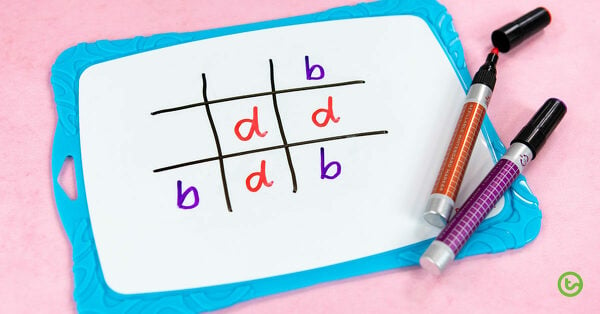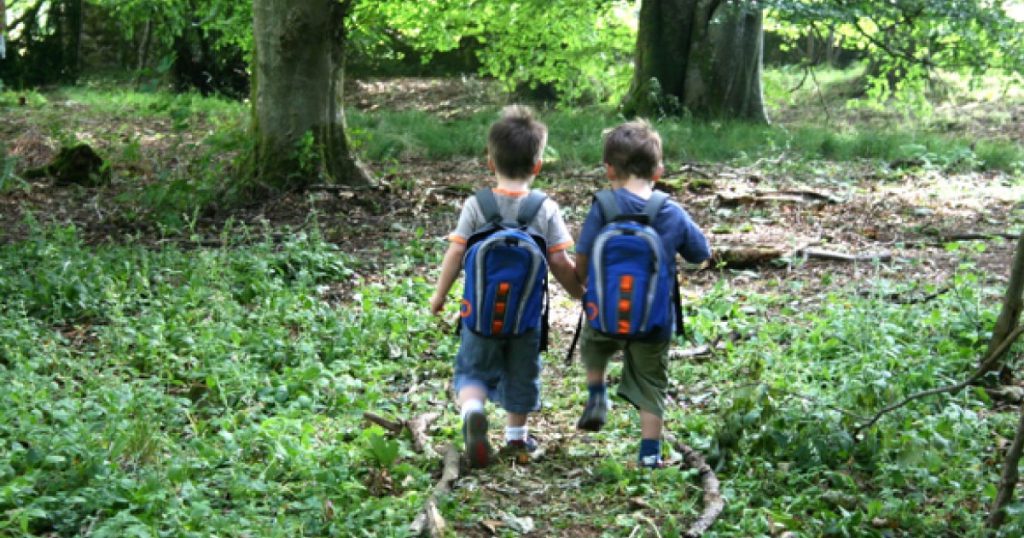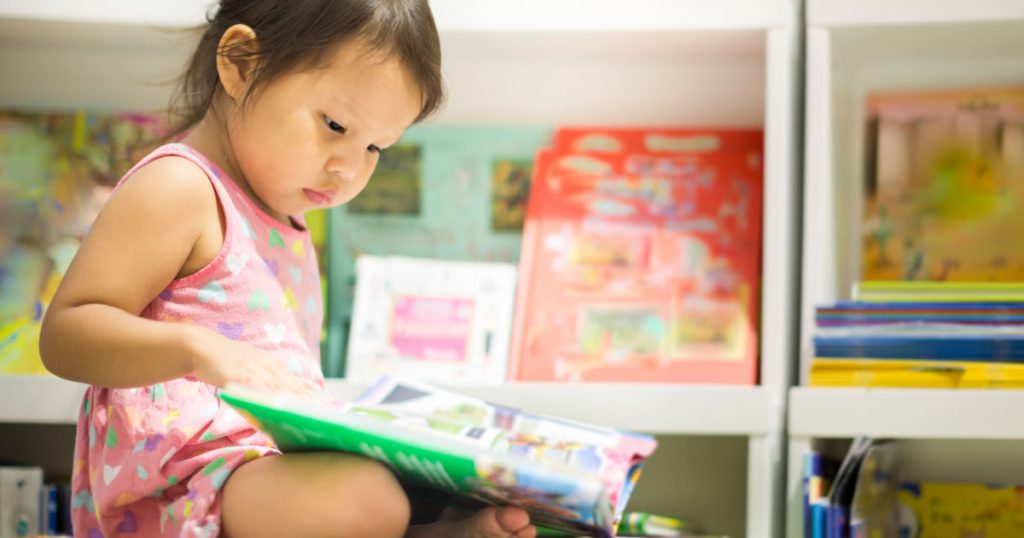During my time teaching in the primary grades, it was not unusual to have several students who would reverse (or confuse) letters and numbers during reading, writing, and math activities. Of course, because of the common link between letter and sound reversal and dyslexia, parents were often very concerned when they saw their children reversing their letters and numbers.
As educators, we know it is a common developmental hurdle to deal with in the classroom, and with repetition and exposure, most children can settle their letter confusion. To read more about letter reversal and mirror writing, check out our blog – Why Students Reverse Letters – A Guide for Teachers (Mirror Writing).
This blog highlights some activities you can do with students who often get common letters confused.

Ann in the UK / Shutterstock.com
Tips and Activities to Help Correct Letter Confusion in Kids
Mouth Formation Trick
Common letters that get confused or reversed are ‘b’ and ‘d’ and ‘m’ and ‘w’ – for reasons why this is confusing for children, head over to our blog on why students reverse letters. One way to help students understand the difference is the mouth formation trick.
In this strategy, students are taught that when they make the /b/ sound, the crease between the upper and lower lip is straight, just like the line that starts the letter ‘b’ when writing it. When making a /d/ sound, the tongue is curled just like the curl that starts the letter ‘d’ when writing it.

Abo Photography / Shutterstock.com
You can also use this strategy for the letters m and w. When you make the /m/ sound, your lips are closed just like the top of the letter m. When you make the /w/ sound, your mouth is open just like the top of the letter w.
Use Visual Cues
Using visuals in the classroom is another excellent way to develop your students’ understanding of these letter formation.
With the reversal of letters ‘b’ and ‘d’ being the most common, I love this little trick! If you put both thumbs up and touch your knuckles together, it creates an instant visual cue showing how the letters ‘b’ and ‘d’ are written. It also kind of looks like a bed, which is another great visual!
Our B and D Letter Confusion Poster is a great visual reminder of this trick that you can hang on your classroom wall.

Worksheets and Activities
After visual cues, repetition is the next step in helping students with their letter reversals. We have a number of worksheets and activity ideas that you can use.
First up is our set of 10 Letter Confusion Worksheets. The worksheet below simply asks students to circle a specific letter in each line.
Letters available – b and d, p and q, n and m, i and j, f and t.
We have added another element of fun to this next worksheet by including a die and turning it into a game. Grab some sticky dots and choose the two letters you want your students to focus on. I have used the most common, ‘b’ and ‘d’. This would be a fantastic game played in pairs.
Here’s how to play:
- Each student has a different colored crayon or marker.
- They take turns rolling the die and coloring one of the stars that have the matching letter.
- The student with the most stars in their color wins. Alternatively, the first student to get three stars in their color in a row wins.
Our Uppercase and Lowercase Letter Maze worksheets are another great way to get your students to focus on letter formation!
These engaging mazes allow students to follow the path of lowercase and uppercase letters from start to finish. It is available for every letter of the alphabet to differentiate what letters your students need extra assistance with.
Multi-Sensory Materials
Using multi-sensory materials is a great hands-on approach to get your children engaging with the formation of letters. For more great sensory tray activities for letter formation practice, check out our blog – Fun Letter Formation Activities for Kids.
This activity is probably one of the cheapest and easiest activities featured in this blog – but it’s perhaps the messiest! All you need is a can of shaving cream and a desk or tray to spray it on!

I used our Handwriting Posters – Dirt, Grass, and Sky Background With Arrows for this activity.
Some students may struggle to differentiate the letters when they are side by side. Mix up letters that they are getting correct with letters they need extra assistance with!
Using craft sand in a tray is also a great sensory activity. Students need to form letters to reveal a colorful background!

I have used our Letter Formation Alphabet Posters to help with this activity.
Create Your Own Handwriting Sheets
Using our Handwriting widget, create a worksheet that focuses just on the letters your students may be struggling with! Again, keep an eye on these students and assess if this is too confusing for them. In that case, mix up letters that they are comfortable with and those they need extra practice with.
Play Tic-Tac-Toe
We have one last game to finish off the list of ideas! In pairs, give students a particular letter. In this example, I have used ‘b’ and ‘d’.
Students play just like tic-tac-toe but using their letters instead of x and o! It’s is a great activity to pull out when you only have five minutes left!

Do you have any hints and tips for letter reversals or letter confusion? We would love to hear them in the comments below.
The post 11 Hints and Tips to Help Correct Letter Confusion (Letter Reversal) appeared first on Teach Starter.






